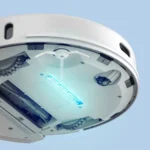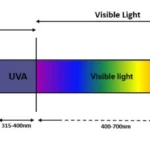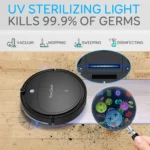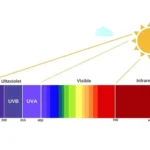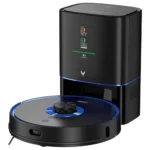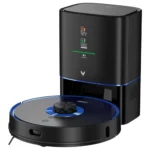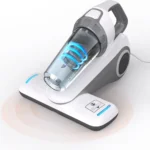Have you ever wondered how effective your current cleaning methods are in eliminating harmful bacteria and viruses from your home? The truth is, traditional methods such as wiping down surfaces with chemical disinfectants may not always do the trick. This is where UV-C light comes in, a cutting-edge solution that has been scientifically proven to effectively kill germs and viruses on surfaces. In this article, we’ll delve into the science behind UV-C light and explore its effectiveness as a cleaning and sterilization method for your home. But first, let’s understand exactly what UV-C light is and how it’s produced.
What is UV-C Light?
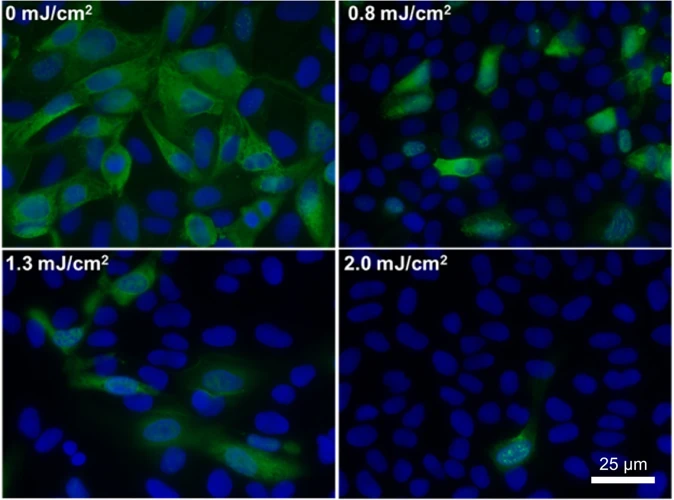
UV-C light is a topic that has gained enormous attention in recent times, especially amid COVID-19 pandemic. This specific type of light is known for its ability to kill bacteria and viruses with high efficiency. But what exactly is UV-C light? UV-C light is a type of ultraviolet light that has a shorter wavelength than the UV-A and UV-B lights, making it highly effective in disrupting the DNA of viruses and bacteria. This part of the article will delve deeper into the science behind UV-C light, including how it’s produced and its unique properties. But if you’re interested in how UV-C light could be incorporated into home cleaning, check out our smart vacuum with UV sterilization for pets, or our list of the top UV vacuums in 2021, or learn more about smart vacuum with UV sterilization for allergens.
Definition of UV-C Light
UV-C light is a type of ultraviolet light that lies within the wavelength range of 100-280 nanometers. It is the shortest and most energetic type of ultraviolet light, making it extremely effective at killing bacteria and viruses. Here are some key facts about UV-C light:
- Short wavelength: UV-C light has a wavelength between 100-280 nm, which is shorter than UV-A and UV-B light.
- High energy: UV-C light has a high energy level that allows it to destroy the genetic material of bacteria and viruses.
- Not visible to the human eye: UV-C light is not visible to the human eye as its wavelength is shorter than visible light.
- Naturally occurring: UV-C light is naturally produced by the sun, but is filtered out by the Earth’s atmosphere, which is why it is not a significant source of UV radiation on the planet’s surface.
- Artificial UV-C: Artificial UV-C light can be produced using specialized light bulbs and lamps, which are commonly used for sterilization and disinfection purposes.
- Used in various industries: UV-C light is widely used in numerous industries such as healthcare, food and beverage, pharmaceuticals, and water treatment, to name a few.
UV-C light is a powerful form of ultraviolet radiation that can effectively kill bacteria and viruses on surfaces. Its short wavelength and high energy make it an ideal disinfectant tool that is widely used in various industries. While it may not be visible to the human eye and occur naturally in small amounts, the artificial production of UV-C light has been a game-changer in the fight against harmful pathogens.
How is UV-C light produced?
UV-C light is a type of ultraviolet light that is produced through various methods. Here are some ways in which UV-C light can be generated:
- Mercury vapor lamps: These lamps generate UV-C light through the excitation of mercury vapor with an electric arc. They are commonly used in industrial, commercial, and medical settings for sterilization and disinfection purposes.
- Light-emitting diodes (LEDs): These are solid-state devices that generate UV-C light when an electric current is passed through a semiconductor material. They are becoming more popular for use in household appliances due to their low power consumption, long lifespan, and ease of use.
- Xenon flash lamps: These lamps produce intense pulses of broad-spectrum UV light, including UV-C. They are used in medical applications for disinfection purposes.
- Low-pressure mercury lamps: These lamps produce UV-C light by passing an electric current through a gas mixture containing mercury vapor. They are commonly used for disinfection purposes in air and water treatment systems.
Regardless of the method of production, UV-C light has demonstrated tremendous effectiveness in killing bacteria and viruses on surfaces.
How UV-C Light Works Against Germs and Viruses
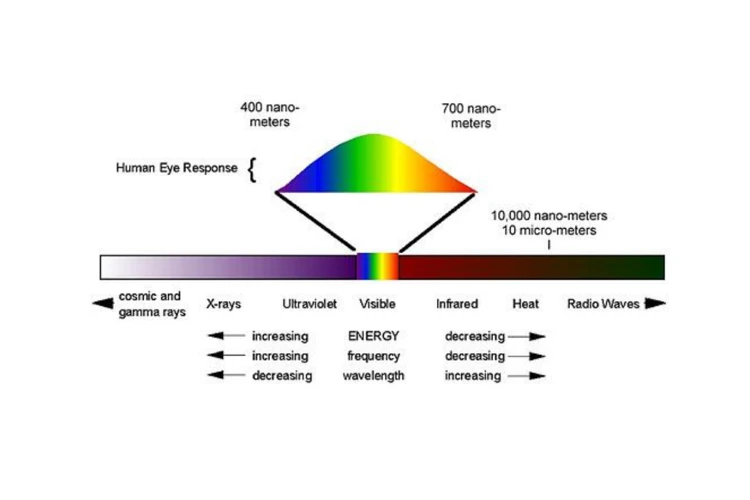
When it comes to fighting bacteria and viruses, you might think that the only way to do so is with harsh chemicals or antibiotics. However, there’s another weapon in the fight against pathogens – UV-C light. This powerful form of radiation penetrates the cell walls of microorganisms, disrupting their DNA and rendering them unable to reproduce. But how does this process work? Let’s dive deeper into the science behind UV-C light and its effectiveness in killing germs and viruses on surfaces.
UV-C Light’s Effect on Bacteria
Bacteria are one of the most common microorganisms that can be found on surfaces. They can cause a range of illnesses and infections, which is why it is important to keep them at bay. Fortunately, UV-C light has been found to be highly effective against bacteria.
Here are some of the ways UV-C light works against bacteria:
- Breaks down the bacteria’s DNA: UV-C light damages the DNA of bacteria by breaking down the molecular bonds, which ultimately leads to the death of the bacteria.
- Disrupts cellular activity: UV-C light can also disrupt the cellular activity of bacteria, making it difficult for them to reproduce and survive.
- Targets various types of bacteria: Research has shown that UV-C light is highly effective against a wide range of bacteria, including E. coli, Salmonella, and Staphylococcus aureus.
- Reduces bacteria in the air: UV-C light can also be used to sanitize the air, which can reduce the number of bacteria that can be transmitted through airborne particles.
However, it is important to note that:
- UV-C light needs to be applied for a sufficient amount of time in order to be effective against bacteria.
- UV-C light can only disinfect surfaces that are directly exposed to the light, so it is important to ensure that all surfaces are properly and thoroughly treated.
- UV-C light should not be used as the only method of disinfection, but rather in combination with other methods such as regular cleaning and disinfecting.
UV-C light has shown to be a highly effective tool in fighting against bacteria on surfaces, making it a valuable addition to any cleaning and disinfecting routine.
UV-C Light’s Effect on Viruses
It’s important to understand the effect of UV-C light on viruses, especially in today’s world where viruses have become a major concern. UV-C light can effectively kill viruses on surfaces by breaking down their DNA and rendering them unable to replicate. This is particularly important since viruses can survive on surfaces for up to several days and be easily transmitted from person to person.
When exposed to UV-C light, viral DNA becomes damaged through a process called thymine dimerization, which causes the DNA to fuse together and become unable to replicate. This, in turn, prevents the virus from infecting cells and reproducing, allowing the body’s immune system to fight off the remaining viral particles.
The following table highlights some of the viruses that have been shown to be effectively eliminated by UV-C light:
| Virus | UV-C Light Dosage Required to Kill |
|---|---|
| Influenza Virus | 6 mJ/cm2 |
| Coronavirus | 22 mJ/cm2 |
| Hepatitis A Virus | 28 mJ/cm2 |
| Ebola Virus | 150 mJ/cm2 |
It’s important to note that while UV-C light can effectively kill viruses, it must be used in conjunction with proper cleaning and disinfecting practices. UV-C light does not remove physical debris or dirt from surfaces, and it is important to clean the surfaces thoroughly before applying UV-C light to them.
Additionally, not all UV-C light devices are created equal. It’s important to choose a device with the appropriate wavelength and output to ensure that it is strong enough to effectively kill viruses and germs on surfaces. Consult with a professional or conduct thorough research before investing in a UV-C light device for your home or business.
UV-C light is a powerful tool in the fight against germs and viruses on surfaces. When used properly and in conjunction with proper cleaning practices, it can help keep your home or business clean and safe.
Effectiveness of UV-C Light in Killing Germs and Viruses on Surfaces
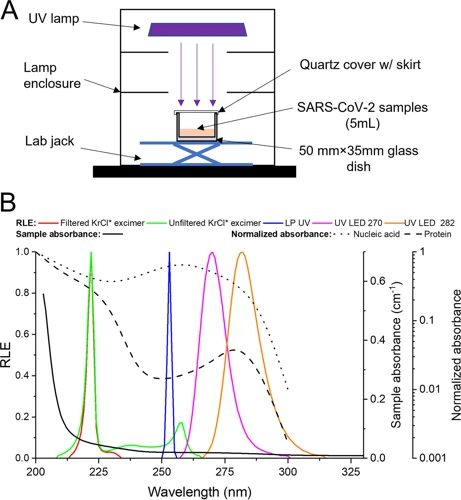
When it comes to cleaning and sanitizing surfaces, there is no shortage of options available. From disinfectant wipes to chemical sprays, it can be overwhelming to choose the best method for effectively eliminating harmful bacteria and viruses. However, one powerful solution that has gained attention in recent years is UV-C light. This form of light has been shown to be highly effective in killing germs and viruses on surfaces, making it a promising alternative to traditional cleaning methods. In this section, we will explore the science behind UV-C light’s effectiveness and consider its potential applications in keeping your home clean and safe.
Scientific Studies on the Effectiveness of UV-C Light
Various scientific studies have been conducted to test the effectiveness of UV-C light in killing bacteria and viruses. Here are some of the key findings from these studies:
- The effectiveness of UV-C light is dependent on the dose of radiation: In a study conducted to test the effectiveness of UV-C light against the influenza virus, researchers found that the amount of UV-C radiation required to kill the virus depended on the dose administered. Specifically, a higher dose of radiation was found to be more effective in killing the virus than a lower dose.
- UV-C light can effectively kill various types of bacteria: A study conducted to test the effectiveness of UV-C light against bacteria such as E. coli, Salmonella, and L. monocytogenes found that UV-C light was able to effectively kill these bacteria when applied at appropriate doses.
- UV-C light can be effective in reducing the spread of airborne viruses: In a study conducted to test the effectiveness of UV-C light in reducing the spread of airborne viruses in a hospital setting, researchers found that the use of UV-C light in addition to regular cleaning protocols led to a significant reduction in the spread of viruses.
- UV-C light can be used to effectively disinfect surfaces: A study conducted to test the effectiveness of UV-C light in disinfecting surfaces such as keyboards and mobile phones found that UV-C light was able to significantly reduce the number of bacteria present on these surfaces.
These studies demonstrate that UV-C light can be a highly effective tool for killing bacteria and viruses. However, it is important to note that the effectiveness of UV-C light can be influenced by various factors such as the distance between the light source and the surface being disinfected, the duration of exposure to the light, and the angle of incidence of the light. It is therefore important to follow proper guidelines and safety precautions when using UV-C light for disinfection purposes.
Factors that Affect UV-C Light’s Effectiveness
The effectiveness of UV-C light in killing germs and viruses on surfaces can be affected by several factors. Here are some of the most important ones to keep in mind:
- Intensity: The intensity of the UV-C light source is directly proportional to its effectiveness in killing germs and viruses. A higher intensity lamp will generally be more effective in killing a higher percentage of germs and viruses compared to a lower intensity lamp.
- Exposure time: The exposure time required for effective germicidal action of UV-C light is directly proportional to the intensity of the light source. This means that a higher intensity lamp will require less exposure time to kill the same percentage of germs and viruses than a lower intensity lamp.
- Distance: The distance between the UV-C light source and the surface to be disinfected is also an important factor. The closer the surface is to the light source, the more effective the UV-C light will be. It is important to ensure that the UV-C light source is placed close enough to the surface to be disinfected in order to ensure maximum effectiveness.
- Reflectivity: The reflectivity of the surface being disinfected can have a major impact on the effectiveness of UV-C light. Surfaces that are highly reflective, such as stainless steel or mirrors, can reflect a large amount of the UV-C light away from the surface, reducing its germicidal effectiveness. It is important to ensure that the surface being disinfected is not highly reflective to maximize the effectiveness of the UV-C light.
- Shadowing: Shadowing occurs when an object blocks the UV-C light from reaching the surface to be disinfected. This can happen when the UV-C light source is not positioned at the correct angle or when objects are placed in the way. It is important to ensure that the UV-C light source is positioned correctly to avoid shadowing and maximize the effectiveness of the UV-C light.
- Temperature and humidity: UV-C light can be less effective in high humidity environments, and high temperatures can also reduce the germicidal effectiveness of the UV-C light. It is important to disinfect surfaces in a cool, dry environment to maximize the effectiveness of the UV-C light.
By keeping these factors in mind and ensuring that the conditions are optimized for maximum germicidal effectiveness, UV-C light can be an extremely effective method of disinfecting surfaces and killing germs and viruses.
Benefits of UV-C Light in Keeping Your Home Clean and Safe
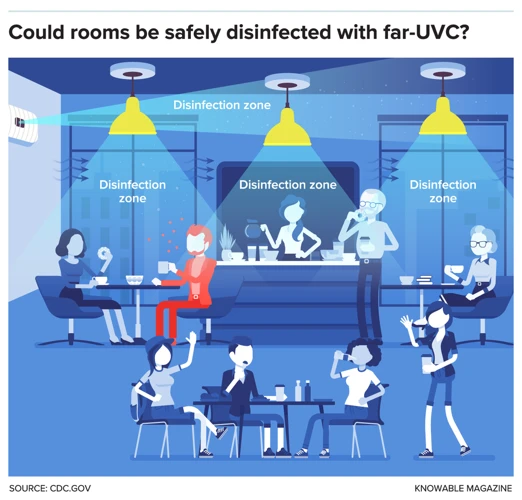
Maintaining cleanliness and sanitation is essential to keep our homes safe and free from harmful germs and viruses. While chemical disinfectants are widely used for cleaning surfaces, UV-C light has emerged as an effective alternative. UV-C light offers several benefits in keeping your home clean and safe from infectious diseases. Let’s explore the advantages of using UV-C light for cleaning and sterilization.
UV-C Light vs. Chemical Disinfectants
When it comes to disinfecting surfaces, there are several methods available, including chemical disinfectants and UV-C light. Chemical disinfectants have been commonly used for many years and are effective at killing germs and viruses. However, they often contain harsh chemicals that can be harmful to humans and the environment. Some bacteria and viruses may develop resistance to chemical disinfectants over time.
On the other hand, UV-C light has been shown to effectively kill germs and viruses on surfaces without the use of chemicals. Unlike chemical disinfectants, UV-C light does not leave behind harmful residues or produce harmful byproducts. Additionally, since bacteria and viruses cannot develop resistance to UV-C light, it can be used continuously without the need to switch disinfection methods.
While chemical disinfectants can be effective, they often require longer contact times and can be difficult to apply evenly. UV-C light, on the other hand, can disinfect surfaces quickly and evenly, making it a more efficient option for large or complex surfaces.
It’s also worth noting that many chemical disinfectants require repeated applications over time to maintain effectiveness, whereas UV-C light is effective after just one treatment. This can save both time and money in the long run.
While both chemical disinfectants and UV-C light are effective at killing germs and viruses on surfaces, UV-C light offers several advantages, including its more efficient application, lack of harmful residues, and continuous effectiveness without the development of resistance.
Applications of UV-C Light in Cleaning and Sterilization
UV-C light has a wide range of applications when it comes to cleaning and sterilization. From hospitals and laboratories to households, UV-C light is used to effectively kill germs and viruses, ensuring a clean and safe environment. Let’s take a look at some common applications of UV-C light in cleaning and sterilization:
| Application | Description |
|---|---|
| Water sterilization | UV-C light can be used to sterilize water by killing harmful bacteria and viruses. It is commonly used in water treatment plants and aquariums to keep the water clean and safe for consumption. |
| Surface disinfection | UV-C light can be used to disinfect surfaces such as tables, keyboards, and countertops. It is a safe and effective way to eliminate germs and viruses without the use of harmful chemicals. |
| Air purification | UV-C light can be used to purify the air by killing airborne bacteria and viruses. It is commonly used in HVAC systems, hospital rooms, and airplanes to ensure clean and safe air. |
| Food processing | UV-C light can be used to sterilize food processing equipment and surfaces. It is commonly used in the food industry to eliminate harmful bacteria and viruses that can cause foodborne illnesses. |
| Medical equipment sterilization | UV-C light can be used to sterilize medical equipment such as surgical instruments and hospital beds. It is a safe and effective method of sterilization that can eliminate harmful pathogens. |
UV-C light is a powerful tool for cleaning and sterilization. Its ability to kill germs and viruses makes it a popular choice for a wide range of applications. Whether you are looking to keep your home clean, or you are working in a laboratory or hospital, UV-C light can help ensure a clean and safe environment.
How to Use UV-C Light in Your Home
As you’ve learned from the previous sections, UV-C light is a powerful tool in killing bacteria and viruses. But how can you use it in your own home? In this section, we’ll discuss the proper methods for utilizing UV-C light to disinfect and sterilize surfaces. It’s important to follow safety precautions and choose the right equipment to maximize the effectiveness of UV-C light. So let’s dive into the details of how to use this technology in your home.
Safety Precautions When Using UV-C Light
UV-C light can be an effective tool for cleaning and sterilizing your home, but it’s important to use it safely. Here are some important safety precautions to keep in mind:
- Always wear protective gear: When using UV-C light, it’s essential to protect your eyes and skin from exposure. Always wear goggles, gloves, and long sleeves when handling UV-C equipment.
- Keep UV-C equipment out of reach: Keep all UV-C light equipment out of reach of children and pets. Exposure to UV-C light can be harmful to both humans and animals.
- Don’t use UV-C light on living creatures: Never use UV-C light on living creatures, including plants and animals. Exposure to UV-C light can be harmful and even deadly.
- Follow manufacturer instructions: Be sure to carefully read and follow the manufacturer’s instructions for any UV-C equipment you use. Improper use can be dangerous.
- Do not look directly at UV-C light: UV-C light can cause eye damage and blindness if you look directly at it. Always wear protective goggles and make sure others are not present in the room where UV-C light is in use.
- Allow time for equipment to cool: After using UV-C equipment, allow it to cool down before handling it. Touching hot equipment can cause burns and other injuries.
- Dispose of equipment properly: When you’re finished using UV-C equipment, dispose of any used bulbs and other materials according to local regulations. Never dispose of UV-C equipment in your regular trash.
By taking these safety precautions, you can use UV-C light effectively without putting yourself, your loved ones, or your pets at risk. Always prioritize safety when using any type of cleaning or sterilization equipment in your home.
Choosing the Right UV-C Light Equipment
When it comes to choosing the right UV-C light equipment, there are a few factors to consider. It’s important to choose equipment that is appropriate for the size of the area you want to disinfect, and that has been proven effective against the types of germs and viruses you are concerned about.
UV-C Light Bulbs: The first thing to decide is whether you want portable UV-C light bulbs or fixed-installed fixtures. Portable UV-C light bulbs are easy to use and can be moved from one room to another. They come in various sizes, with different wattage and UV-C lamp lengths. For larger areas, consider fixed-installed fixtures that cover a wide area and are effective against both surface and airborne germs and viruses.
Wattage and Lamp Length: The next factor to consider is the wattage and lamp length of the UV-C light equipment. The wattage of a bulb determines how powerful it is in terms of the amount of UV-C light it emits. Higher wattage bulbs are more powerful and can cover a larger area. Lamp length, on the other hand, determines how deep the UV-C light can penetrate and disinfect bacteria and viruses.
Timer: Some UV-C light equipment comes with an automatic timer that allows you to set the length of time you want the device to function. This can be useful if you want to disinfect an area without having to be physically present.
Warranty: It’s always important to check the warranty before purchasing any UV-C light equipment. Look for equipment that comes with a manufacturer’s warranty to ensure that you are protected in case anything goes wrong.
Price: The price of UV-C light equipment can vary widely depending on the size, wattage, and features. Consider your budget and choose the equipment that provides the best value for money.
Here is an overview of factors to consider when choosing the right UV-C light equipment:
| Factor to Consider | Description |
|---|---|
| UV-C Light Bulbs | Choose between portable or fixed-installed fixtures |
| Wattage and Lamp Length | Select the right wattage and lamp length based on the size and depth of the area you want to disinfect |
| Timer | Look for devices with automatic timers for convenience |
| Warranty | Look for products with a warranty to make sure you’re protected |
| Price | Consider your budget and select the best equipment that provides value for money |
UV-C Light Treatment: Step by Step Guide
UV-C light treatment is a powerful tool for disinfecting surfaces and keeping your home safe. However, it’s important to follow the correct steps to ensure maximum effectiveness and safety. Here is a step-by-step guide on how to use UV-C light to disinfect surfaces in your home:
| Step | Action |
|---|---|
| Step 1: | Clean the surface to be disinfected thoroughly with soap and water. This step removes dirt and debris that may interfere with UV-C light’s effectiveness. |
| Step 2: | Choose the right UV-C light equipment for the surface you want to disinfect. Make sure the equipment is certified by a recognized organization and suitable for the area you want to disinfect. |
| Step 3: | Wear protective clothing such as gloves, goggles, and long sleeves to avoid exposing your skin to UV-C light, which can cause skin damage and even skin cancer. |
| Step 4: | Position the UV-C light equipment about 1-2 feet away from the surface to be disinfected. Make sure the equipment is facing the surface directly. |
| Step 5: | Turn on the UV-C light equipment and let it run for at least 30 minutes. This gives the light enough time to kill all the germs and viruses on the surface. |
| Step 6: | Once the treatment is complete, turn off the UV-C light equipment and wait at least 15 minutes before entering the room. This allows any residual UV-C light to dissipate, reducing the risk of skin damage. |
| Step 7: | After the waiting period, wipe the surface with a clean, damp cloth to remove any remaining germs or debris. |
By following these simple steps and taking the necessary precautions, you can effectively use UV-C light to keep your home clean and safe. Remember to always read and follow the instructions provided by your specific UV-C light equipment, and to wear appropriate protective clothing to avoid skin damage.
Conclusion
In conclusion, the science behind UV-C light and its effectiveness in killing bacteria and viruses on surfaces is undeniable. As a non-chemical and non-toxic disinfectant, UV-C light offers a safe and eco-friendly alternative to traditional cleaning methods.
Through various scientific studies, it has been proven that UV-C light can effectively kill a wide range of pathogens, including bacteria and viruses, on surfaces. However, the effectiveness of UV-C light depends on several factors, including the intensity and exposure time.
While UV-C light is highly effective, it is important to note that it should not replace regular cleaning and hygiene practices. UV-C light can only sanitize the surfaces it reaches, and it cannot effectively clean areas with visible dirt or grime.
When using UV-C light, it is important to take appropriate safety precautions to protect yourself from direct exposure. Choosing the right UV-C light equipment and following proper sterilization procedures is also crucial to achieve optimal effectiveness.
In the end, UV-C light can be a useful tool in keeping your home clean and safe from harmful pathogens. By understanding the science behind its effectiveness and taking the necessary precautions, you can incorporate UV-C light into your cleaning routine and enjoy its benefits.
Frequently Asked Questions
Can UV-C light kill all germs and viruses?
UV-C light is effective against many types of bacteria and viruses, but it may not be able to kill all of them. The effectiveness of UV-C light depends on factors such as the shape and size of the microorganism, as well as the duration and intensity of the exposure.
Is UV-C light safe for humans?
Direct and prolonged exposure to UV-C light can be harmful to the skin and eyes. It is important to use UV-C light equipment safely and follow recommended guidelines for use.
Can UV-C light penetrate through surfaces?
UV-C light can only kill germs and viruses on surfaces that it directly shines on. It cannot penetrate through solid objects, which is why it is important to use the UV-C light equipment to treat all surfaces within a given area.
What is the ideal distance between the UV-C light and the surface to be cleaned?
The ideal distance between the UV-C light and the surface to be cleaned depends on the intensity of the light and the duration of treatment. It is recommended to follow the manufacturer’s instructions for the specific equipment being used.
Can UV-C light be used to clean electronics and sensitive surfaces?
UV-C light can be damaging to some materials, particularly plastics and electronics. It is important to use equipment specifically designed for cleaning sensitive surfaces or to avoid using UV-C light on these materials altogether.
How long does it take for UV-C light to kill germs and viruses?
The time it takes for UV-C light to kill germs and viruses depends on factors such as the intensity of the light and the duration of exposure. Generally, it can take anywhere from a few seconds to several minutes to effectively kill microorganisms on surfaces.
Can UV-C light be used to clean the air?
UV-C light can be used in certain air purification systems to kill airborne bacteria and viruses. However, it is important to note that UV-C light cannot trap or filter out particulate matter or other pollutants, so it should be used in conjunction with other air cleaning methods.
How often should I use UV-C light to clean my home?
The frequency of UV-C light cleaning depends on factors such as the size of your home, the number of people living in it, and the level of activity in the space. Generally, it is recommended to use UV-C light at least once a week in high-traffic areas.
Can UV-C light replace traditional cleaning methods?
UV-C light should not be seen as a replacement for traditional cleaning methods such as wiping down surfaces with disinfectants. Rather, it can be used as an additional step in the cleaning process to further eliminate germs and viruses.
What are the long-term benefits of using UV-C light to clean my home?
Using UV-C light to clean your home can help reduce the spread of germs and viruses, leading to a healthier living environment. Additionally, it can help reduce the reliance on chemical disinfectants, which can be harmful to human health and the environment.

